 By Pepper Parr
By Pepper Parr
September 25, 2017
BURLINGTON, ON
The high school education I got – more than 60 years ago, is a lot different than the high school education Andrea Taylor got before she started her university studies at McMaster and then went on to Queen’s to do graduate work in education.
And the high school education that Taylor was responsible for delivering to students at M.M. Robinson high school where she was principal for five years was different yet again.
“It used to be that students had to fit into the mold the classroom teacher created” said Taylor – “now the classroom teacher has to find a way to fit into and work with what the students bring to the classroom. “There is no pigeon holing in schools today. The challenge today is huge and the dynamic is a lot different.”
“How do we prepare our high school students to develop careers in areas that don’t exist today? What are we preparing students for? We often don’t know but we do know that we can give them the tools they will need to grow and prosper.
“The challenges are immense.”
Today’s student has to deal with forces that are new to society. Student mental health was not an issue when Taylor was a high school student; today it is a prime concern for every principal in the system
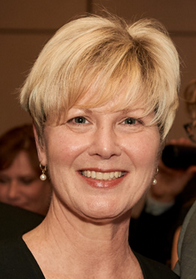
Andrea Taylor, principal at Gary Allan school.
Taylor was the recipient of a Learning Partnership award and named one of Canada’s Outstanding Principals for 2017. She was one of two principals named in Halton. The award is given to high school principals from across the country who are then brought together for a five-day leadership training program at the Rotman School of Management.
Taylor, born in Toronto, spent some time in Vancouver and returned to Toronto.
She is one of four girls in the family.
The system Andrea Taylor became a part of in the early 1990’s when she started out as a classroom teacher was not all that healthy province wide.
In 1998, Michael Fullan and British educator Andy Hargreaves co-authored “What’s Worth Fighting for in Education?” It was the beginning of a much different look at the way we were educating our children.
Fullan was the Dean of the Faculty of Education in 1988; and remained Dean following its amalgamation with the Ontario Institute for Studies in Education in 1996.
His work is what brought Ontario’s schools out of the troubled state they were in. “The system had flat lined across the province — results were stagnant year after year. Morale of teachers was low; the schools as a whole could be characterized as ‘loosely-coupled’ and without focus” claimed Fullan.
Fullan served as Special Policy Adviser in Education to the Premier of Ontario from 2004-2013. His work worked and by 2013, the overall performance of the almost 5,000 schools in the province had dramatically improved on most key measures and continues to improve to the point where Ontario is recognized as and proven to be one of the best school system in the English-speaking world — right up at the top with Finland, Singapore and South Korea.
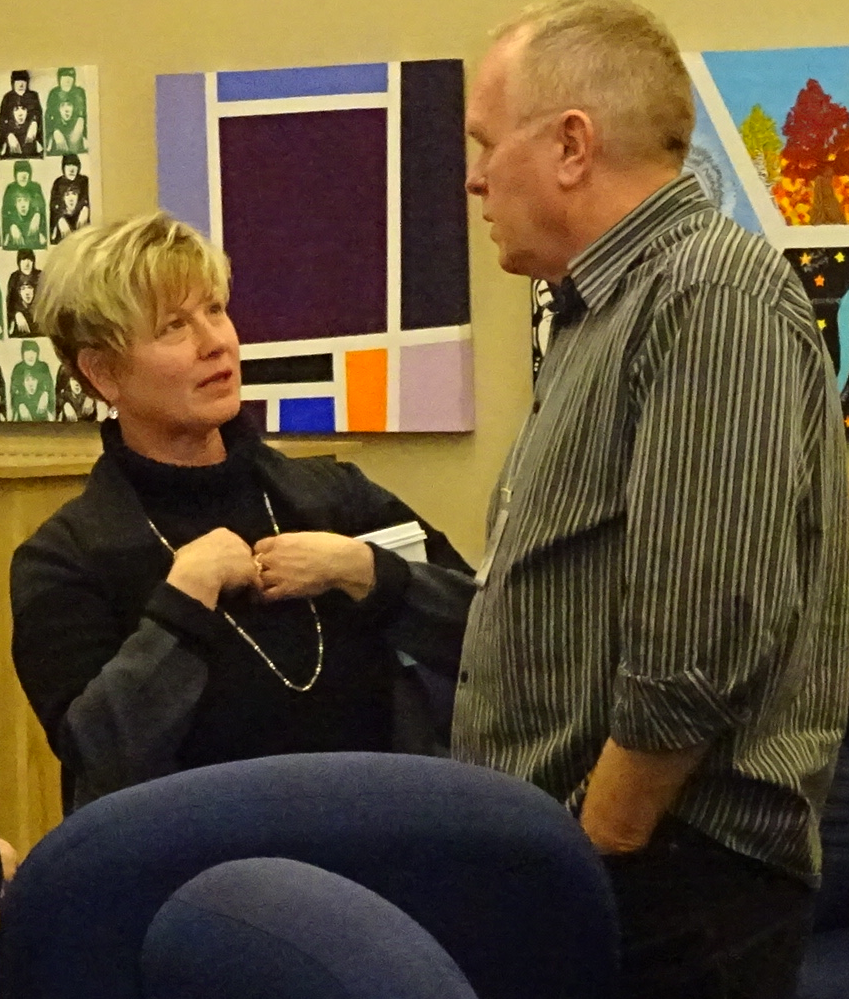
Andrea Taylor in discussion with Steve Armstrong during the PARC meetings.
Taylor was part of that process as she moved from the elementary school level into high school, served as a vice principal and then was made principal of M.M. Robinson were she spent five years until her recent appointment as principal of Gary Allan – a school with four campuses and strong relationships with The Centre, a trade school that operates at arm’s length from the Board of Education, self funds but is tied into School Board policies.
Ontario had developed “from good to great.” The challenge now was to move from great to excellent.
“Greatness is the enemy of excellence because it is easy to be complacent, and take things for granted” claims Fullan.
The challenge now for educators like Taylor is to sustain improvement as well as go beyond it into new levels of learning through focused innovations.
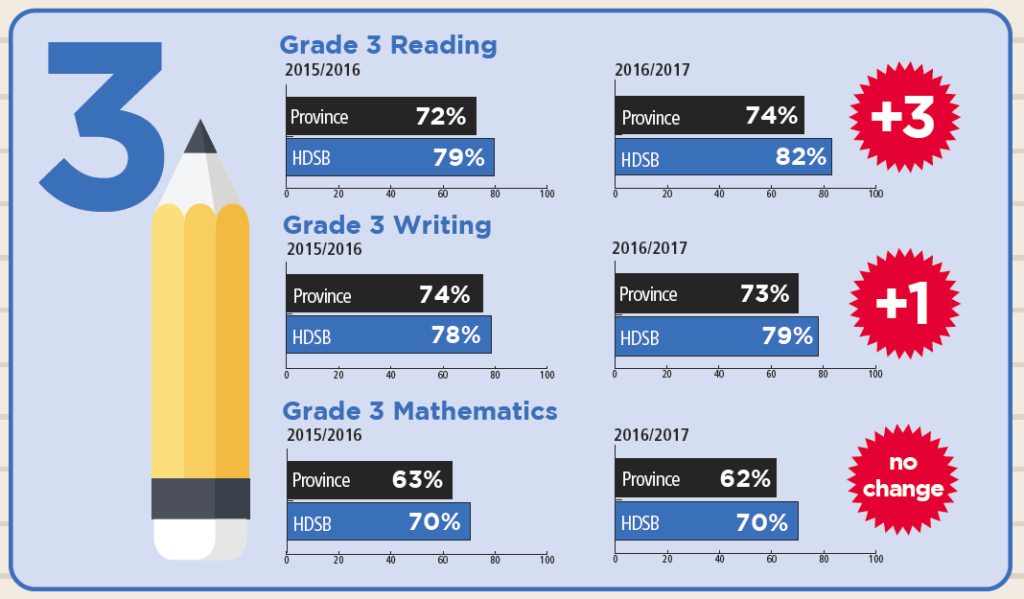
The exceptional improvement of the grade 3 reading scores is seen as a direct result of the introduction of full day kindergarten.
There were significant achievements: Literacy and numeracy improved from 54 per cent to 70 per cent on average across the province’s 4,000 elementary schools as measured by the Education Quality and Accountability Office (EQAO).
Those numbers are even better for 2016.
Graduation rates improved by about two per cent every year, bringing the province’s 900 high schools to an 82 per cent graduation rate from its starting point of 68 per cent.
Fullan tells us that “What really sticks with the external researchers and the numerous site visitors to the province’s schools from all over the world is what they see and hear when they visit schools. They can go into almost any school in the province and they will find consistency of good practice. When they ask teachers or principals to explain what they are doing and why, they get specific. Educators can point to particular actions and show the link to student learning. They know where each and every student is on the learning journey.”
Taylor was a classroom teacher and a principal during this period of significant change. Chosen as a one of the best principals in the country was recognition that she not only participated in the change but was one of the leaders
Ontario’s full-day kindergarten now has all 250,000 four and five year-olds in full-day kindergarten, the first program of its kind in North America
Instructional strategies have been modified in grades 1 and 2 to match the new capabilities and confidences of the children being served.
The superb, best ever results in Halton for grade 3 reading and writing is a reflection of the full day kindergarten program.
What all of the above means is that teachers, individually and collectively — and the system as a whole — know what they are doing. They are doing it because it works. They are intrinsically motivated to keep on improving.
They are driven not just because they care, but also because they are actually making a measurable difference that affects the lives of their students.
The public has also noticed. Public satisfaction with the education system has moved from 43% in 2004 to the present all-time high of 65 per cent.
Just what the 21st century is going to require of educators was a large part of the week long session Taylor spent at the Rotman School of Business Management University of Toronto where the group of 49 Outstanding Principals met each day with leaders from different professional groups.
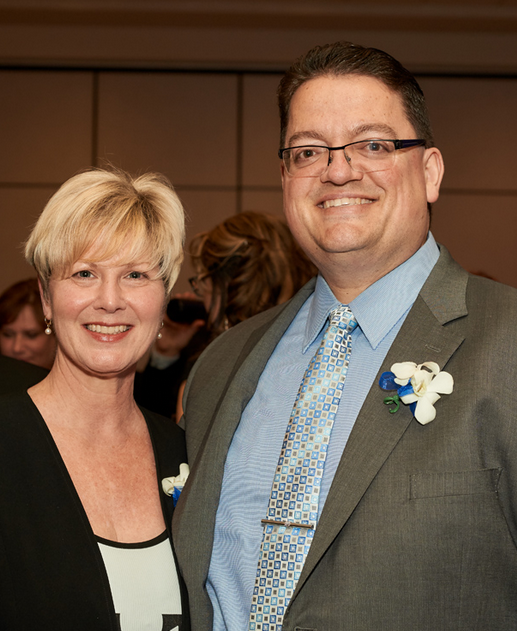
Andre Taylor and Loui Silvestri the two Outstanding Principals in Halton for 2017.
“They explained the changes they saw coming and dialogued with us on how our schools were a critical part of preparing students for a world that is in a constant state of change”, said Taylor
In a paper “Energizing Ontario Education”, three core priorities were established:
• High levels of student achievement — in literacy and numeracy at 75 per cent and in high school graduation at 85 per cent.
• Reduced gaps in school achievement for all subgroups of students.
• Increased public confidence in publicly funded education — greater two- way partnership and confidence with parents, communities and the public at large.
Fullan talks from that 40,000 foot up level when he says “People have been talking about skills for the 21st century for at least a quarter of a century — a conversation marked by superficiality and vague notions of what it means. This is rapidly changing as new pedagogical specificity and powerful technology converge. Ontario now has the capacity to make pedagogy the foundation in learning through the use of technology and new digital resources. What makes this even more exciting is that the new work is already happening in many pockets across the province.”
Taylor is one of those “pockets”. “Teachers have that special relationship with their students” she said. “I never had a student I didn’t like” and quietly recalled a student that was lost due to an accident.
Taylor has hired some of the students she taught in high school and added – as they grow up they do get away from calling me Ms Taylor. Some never do she added with a kind of “perky” smile.
Schools don’t offer cookie cutter programs anymore. There is an almost a limitless list of courses they can take.
“Every student has a gift, the task is to discover that gift with the student and then nurture and grow it”, said Taylor.
“Teachers don’t stand in front of the classroom any more, they partner with their students and prepare them for a world that is confusing, fearful at times and prone to change every 30 days.”
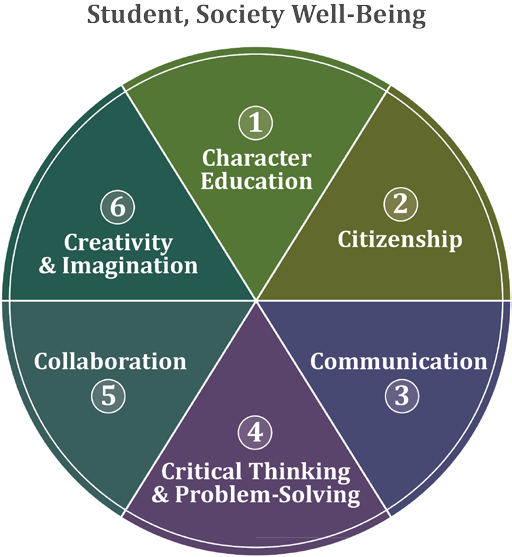 The six Cs that Fullan brought to the table form the agenda: character, citizenship, communication, critical thinking and problem solving, collaboration and teamwork, and creativity and imagination.
The six Cs that Fullan brought to the table form the agenda: character, citizenship, communication, critical thinking and problem solving, collaboration and teamwork, and creativity and imagination.
Fullan explains that “As we delve into the meaning of these concepts, it is important to stress that we should not launch into an abstract discussion. In the next period of development, these core priorities must be defined, operationalized in practice, measured to mark success and to clarify progress. These next steps have to be widely shared because they work. This process of specificity and dissemination is our strength. We must put it to good use for the next phase of success.
“The capacity of educators in Ontario, as noted, is at such a high level as a result of the strategies of the past nine years that much of the leadership — what we might call leading from the middle — is already in the system. It needs to be cultivated and spread throughout the province, including establishing clarity of each of the six clusters and their interrelationships, learning experiences that develop the skills and dispositions in question, and the means of measuring and fostering progression in their development. But the middle cannot lead in a vacuum. Focused leadership from the government will continue to be essential for whole system excellence.”
Teachers use the six C’s which are defined as:
• Character education— honesty, self-regulation and responsibility, perseverance, empathy for contributing to the safety and benefit of others, self-confidence, personal health and well-being, career and life skills.
• Citizenship — global knowledge, sensitivity to and respect for other cultures, active involvement in addressing issues of human and environmental sustainability.
• Communication — communicate effectively orally, in writing and with a variety of digital tools; listening skills.
• Critical thinking and problem solving — think critically to design and manage projects, solve problems, make effective decisions using a variety of digital tools and resources.
• Collaboration — work in teams, learn from and contribute to the learning of others, social networking skills, empathy in working with diverse others.
• Creativity and imagination — economic and social entrepreneurialism, considering and pursuing novel ideas, and leadership for action.
Some distance from the reading, writing and arithmetic – and that rote learning that was used when Taylor was an elementary school student.
Fullan adds that “The fundamental purpose of education in an excellent system is to produce in all of its graduates — as close to 100 per cent as possible — the quality of leadership. By that they mean the capacity and commitment to act for one’s own good and for the common good.”
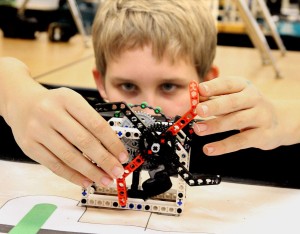
Elementary students are taught to think creatively and solve problems.
When the province implemented Full Day Kindergarten it set in place programs that promote the development of self-regulation, social- emotional learning, inquiry skills, and play-based learning that fosters creativity, imagination and problem solving.
It is that vast and significant change that Taylor rode to the point where she now leads a program that wasn’t even thought of when she first became a teacher; heading up a school that has four campuses and a mandate to work with students who are as diverse as it gets and who are on learning curves that can range from catching up or taking a course that wasn’t available elsewhere.
The student body at Gary Allan ranges from late bloomer high school students to adults who are upgrading or getting a high school diploma that wasn’t available to them in their country of birth.
The Gary Allan school is just up the road from what used to be Elgin high school, it got renamed to Bateman when it was merged with what was General Brock. Now Bateman is scheduled to be closed.
It has indeed been a changing world for Andrea Taylor; one wonders what she will do at Gary Allan in the next five years.


















While I have respect for Ms. Taylor as a principal, her description of teaching focused on the individual needs of the student is hardly new. Nearly 50 years ago, when Lord Elgin High School (now Robert Bateman) opened in 1970, the focus was on teaching the individual, not the class. In fact, all excellent teachers not only have taken the individual needs of students into account when designing lesson plans, but effective lesson plans have always been focused on students, not the teacher. So what she is presenting is hardly new–merely recycled.
And despite all the nice rhetoric and wonderful jargon presented in the article, concerns remain about education, not only in Halton, but Ontario generally. Two stand out. First, many courses–particularly at the applied and college level, literally “dead-end” students–they lead nowhere and provide a lack of knowledge and skills on a practical level that point to no future for the students. Secondly, the first problem is exascerbated by the lack of high expectations for student achievement. Typically, a student can coast through a course with little real effort and still receive a credit with the end result being that the rising graduation rates do not reflect an improvement in learning or teaching but merely a lowering of standards.